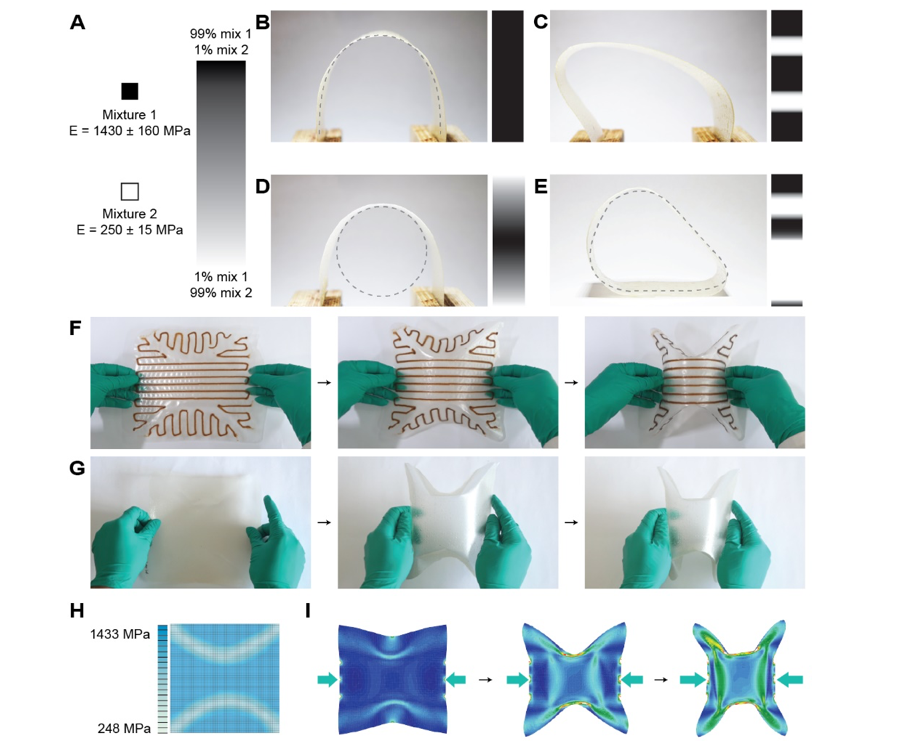
Programmable deformation of cellulose-based materials with stiffness variation. A) A schematic showing stiffness gradients. B-E) Thin cellulose strips of identical size were printed with various stiffness gradient profiles along their length and exhibit different curvature profiles when subjected to the same external displacement. F, G) Flexible graded sheets that transferred load in the transversal direction to large body deformation in the longitudinal direction for a programmed folding effect. F) Sample exhibiting geometric stiffness differentiation through directional placement of reinforcing ribs of higher cross section. G) Sample exhibiting modulus differentiation. H, I) A digital mesh model of the sheet featured in part G).
Functionally graded materials enable applications in fields such as biomedicine and architecture, but their fabrication suffers from shortcomings in gradient continuity, interfacial bonding, and directional freedom. In collaboration with Achim Menges's group, we have leveraged a combined approach of materials and digital processing to enable extrusion-based multimaterial additive manufacturing of cellulose-based tunable viscoelastic materials with continuous, high-contrast, and multidirectional stiffness gradients. Filaments of varying compositions or cross sections were extruded in a solution phase to facilitate molecular diffusion across filament boundaries in creating continuous gradients [ ]. A method to engineer sets of cellulose-based materials with similar compositions, yet distinct mechanical and rheological properties, was established. In parallel, a digital workflow was developed to embed gradient information into design models with integrated fabrication path planning. The payoff of integrating these physical and digital tools is the ability to achieve the same stiffness gradient in multiple ways, opening design possibilities previously limited by the rigid coupling of material and geometry.
